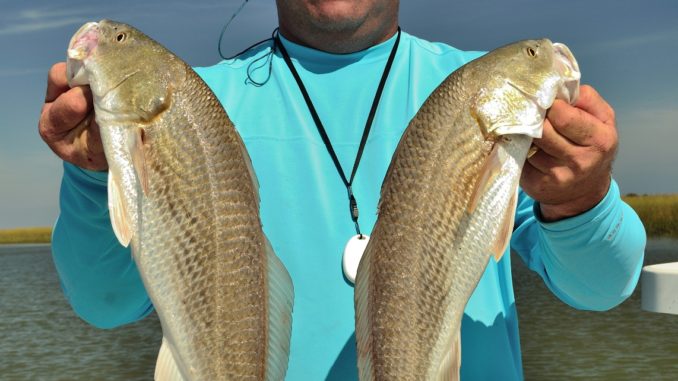
Extensive shallow flats make the huge Cape Romain National Wildlife Refuge a top spot for redfish in cold weather.
In January and February, the expectations of inshore fishermen are usually on the low side, with the major exception of one of South Carolina’s most-favored gamefish. The cold, winter weather brews a fire storm of redfish, and the massive, undeveloped estuary that stretches between Georgetown and Charleston, aka the Cape Romain National Wildlife Refuge, is a prime area for harboring large schools of wintering reds.
The 66,000-acre refuge is one of the largest coastal preserves on the eastern seaboard, directly adjacent to the 258,000-acre Francis Marion National Forest. While the Cape Romain NWR was originally established as a sanctuary for migratory birds, the protection mechanism created a haven for redfish and many other finned creatures.
Since the refuge hasn’t had any substantial man-made alterations over the past 80 years, the estuary contains large expanses of salt and brackish marshes full of oysters, mud flats, grass beds and super shallow water that provides excellent wintering habitat for redfish, which must head to the bank to escape dolphins hunting for food.
Capt. Rob Beglin of Inshore Xtreme Fishing Charters welcomes the cold weather because he takes up residence in these skinny waters, chasing his favorite spot-tailed pals.
“It is my favorite time of year to fish. The fish will school up in groups of 50 to over 100 fish,” said Beglin (843-375-6366). “The Cape Romain area is very shallow, and dolphins have a hard time getting to them.”
As a general rule, the baitfishes are scarce in inshore waters during the winter, but any mullet and mud minnows around will be anchored to the flats around the oyster beds, right where the reds will be residing over the winter season.
“The mullet get trapped on these flats and are just enough food to sustain the reds throughout the winter,” he said.
Warm days during the winter will energize the redfish and get their juices flowing just enough to fall into a feeding frenzy when the right baits are present.
Capt. Johnny Spitzmiller of Ambush Inshore Charters plans his trips to Cape Romain around the weather forecast, because a warming trend can be deadly during the winter.
“Weather conditions make a huge difference in the winter for reds,” said Spitzmiller (843-860-4487). “I look for three days of mild winter, and the third day is best time to hit the water.”
A warming trend fires up redfish, because anything that warms the water a few degrees will make a huge difference in how well you catch January reds.
The tide also controls fishing success. Both Spitzmiller and Beglin prefer to tailor their trips around the low end of the tide cycle, especially when low tide hits during the middle of the day, when the sun has had a chance to warm the exposed dark mud and then heat up the water as it slowly rises. Beglin prefers a low tide between 10 a.m. and 2 p.m.; Spitzmiller will fish the three hours on each side of the low tide. Water that’s warmed a couple of degrees is generally just enough of an increase to get the redfish in a spunky, feeding mode.
“When the water starts warming up, they get more active and start looking for something to eat,” Beglin said.
Even though fish will hold in shallow water, all mud flats are not created equal; some will hold more fish than others. Beglin looks for flats with plenty of oysters bars present.
“The baitfish stay away from the grass and will try to hide in among the irregular oyster mounds where the water is warmer. But the redfish will be right there to eat them,” he said.
With food so scarce, any mullet or mud minnow is in troubled waters around oysters, especially when the water temperature climbs a few degrees.
Spitzmiller patrols similar habitats, but he looks for pushing fish or scattering mullet in places between oyster mounds.
“Everything is real shallow, but you can find depressions where the water is a little bit deeper that hold big groups of fish. These fish can relax well away from predators,” he said.
While these shallow-water fish are safe from marine mammals, the land mammals in fiberglass boats can be a real nuisance. With little deep water around for a retreat and super clear water, wintering redfish spook easily. Anglers need to approach these schools with stealth and keep as much distance between the boat and the fish as possible.
Beglin will slide onto a flat where he typically finds redfish, making his approach from upwind and will dropping his two Power Poles to keep his boat within casting distance of the fish. He will also use covert tactics when picking out fish to target with his casts.
“Soft presentations are critical, and I never throw into the middle of the schools,” Beglin said.
Generally, schools of reds will be slowly moving across a flat or submerged oysters. Beglin will lead the schools in front or will flank them to pick up a fish coming to his bait. More times than not, the majority of the school will be inactive, with only a few fish will be exhibiting feeding behavior. However, Beglin believes when one fish feeds, the rest of the school will react.
“When one eats, then two eats, and then the entire school may erupt in a feeding frenzy. Now that is when the real fun begins,” he said.
According to Spitzmiller, anglers can have continuous action if they stay along the outskirts of the schools.
“You can catch them over and over if you don’t barrel in on them,” he said.
With little for redfish to eat in the winter, both live bait and artificial lures can produce a quick limit. Beglin goes strictly with strictly artificials this time of year, with Gulp! scented soft plastics as his go-to lures. The 3-inch shrimp fished on a 5/0 hook is his standard equipment in January — with a slow presentation being key.
“We will dead-stick the lure for 30 seconds and slowly move it, and then let it sit again. It is a whole lot different from summer fishing. You need patience,” Beglin said.
On the other hand, Spitzmiller will catch a livewell full of finger mullet or pick up a few dozen mud minnows from the bait shop.
“A live mud minnow is the best, but a piece of blue crab or cut bait will work fine, too,” said Spitzmiller, who uses a 2/0 hook and the smallest split shot he can get away with based on the wind.
Too much wind can be a real problem trying to fish in the Cape Romain National Wildlife Refuge on low tide. There are few barrier islands or anything substantial around to block the wind. For Spitzmiller, anytime the wind is out of the east, he will generally fish somewhere else, since the region is wide open from the east. But a hard wind from any direction will raise the level of difficulty, either trying to find a school of 100 reds in 18 inches of water or trying to cast to them.
DESTINATION INFORMATION
HOW TO GET THERE/WHEN TO GO — The waters of Cape Romain and Bulls Bay are best accessed from one of the public boat ramps along the ICW — the Buck Hall Campground in the Francis Marion National Forest (daily fee), Garris Landing in Awendaw off Sewee Road — from the McClellanville Municipal ramp off Jeremy Creek (annual or weekly fee), or from the Pole Yard landing off US 17 on the North Santee River. The redfish bite picks up when the water temperature dips below 55 degrees, pushing fish into schools on the shallow flats. Look for low tides during the middle of the day. Look for flats with oyster rakes from Alligator Creek to Garris Landing, in Cape Romain Harbor, Hamlin Sound, Gray Bay, Copahee Sound, Sewee Bay or Mark Bay.
TACKLE/TECHNIQUES — Live mud minnows or finger mullet, as well as chunks of live crab, are deadly rigged on a 2/0 to 4/0 hook with a small split shot or an 1/8- or 1/16-ounce jighead. But mullet and shrimp imitations rigged weedless are ideal artificial choices, especially those with built-in scent. Flutter hooks are also good for fishing shallow-water flats. All baits should be worked very, very slowly. Medium to medium-heavy 7 1/2-foot spinning outfits spooled with 10- to 17-pound braid will allow for long casts. Use a 24-inch segment of 17- to 20-pound fluorocarbon leader.
FISHING INFO/GUIDES — Rob Beglin, Inshore Xtreme Fishing Charters, Captain Rob Beglin, 843-375-6366, www.fishingchartermyrtlebeach.com; Johnny Spitzmiller, Ambush Inshore Charters, 843-860-4487, www.ambushinshorecharters.com; Capt. Tom Siwarski, Carolina Aero Marine Charters, 843-327-3434, www.carolinaaeromarine.com; Sewee Outpost, Awendaw, 843-928-3493, www.seweeoutpost.com. See also Guides and Charters in Classifieds.
ACCOMMODATIONS — Camping is available at Buck Hall Recreation Area, McClellanville, 843-887-3412; Cape Romain Bed & Breakfast, McClellanville, 843-887-4175, www.caperomainbb.com; Laurel Hill Plantation Bed & Breakfast, McClellanville, 843-887-3708.
MAPS — Capt. Segull’s Nautical Charts, 888-473-4855, www.captainsegullcharts.com; Sealake Fishing; Guides, 800-411-0185, www.thegoodspots.com.

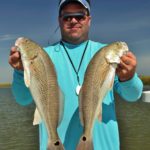
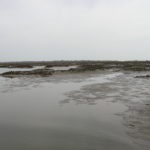
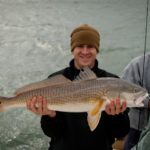
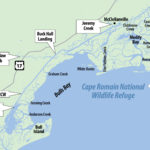



Be the first to comment